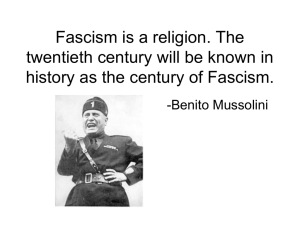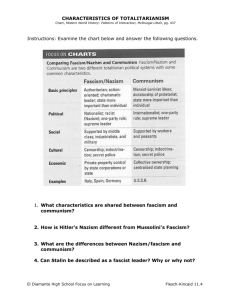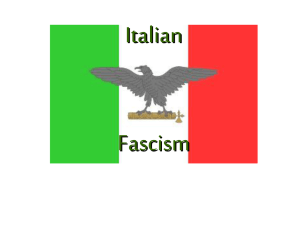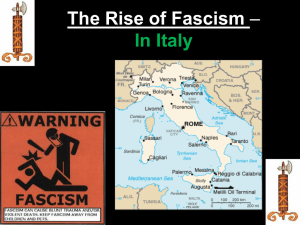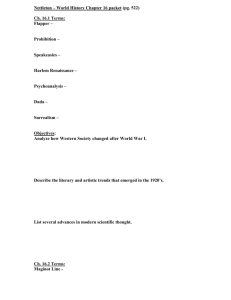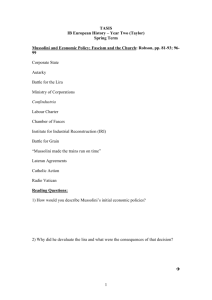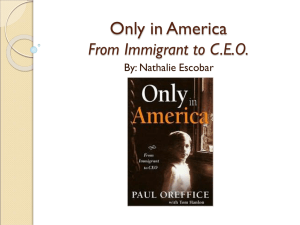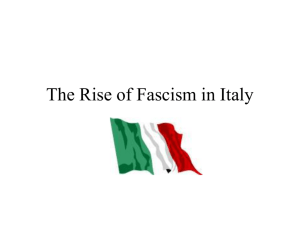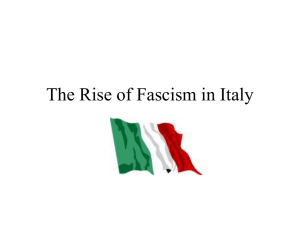Mussolini
advertisement
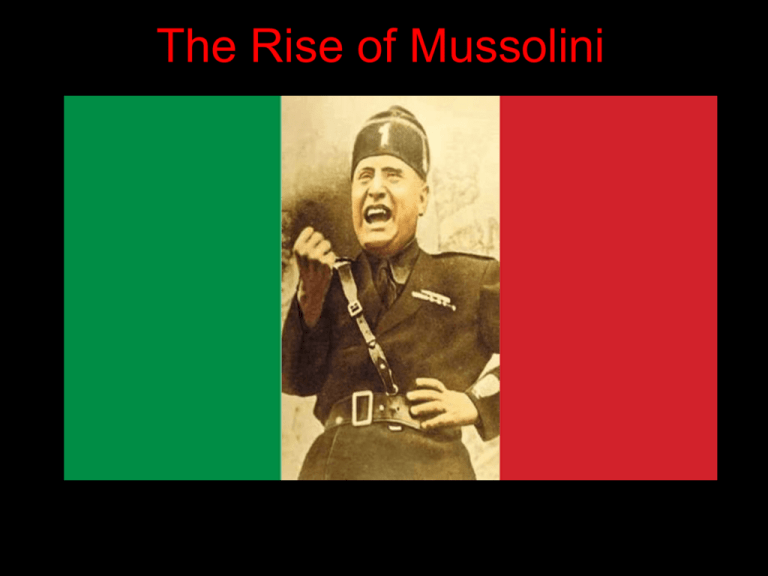
The Rise of Mussolini Things you’ll want to know for your study guide/test • Why the Italians were bitter toward the allies after WWI •Mussolini (his followers/what he did/etc) •Fascism and its goals (3) •Differences between Fascism and Communism •The Constitutional monarch of Italy who appointed a new prime minister during the economic crisis of 1923 •“IL DUCE” •Why people supported Mussolini Fascism in Italy After WWI Italy was bitter because they fought alongside the Allies and were not given what they felt they were owed Further, the Italian economy suffered after WWI: WHY? Lack of _____________________ Germany and Austria: ____________________ Mussolini and Fascism • came from a working class background and was extremely nationalist • Founded Fascist party in 1919 FASCISM 1) Advocates glorification of state 2) Is a single party system with a strong ruler 3) Advocates Totalitarianism 4) Is a “corporate run state” Fascism VS. Communism • Like Communism, it was totalitarian (supreme power of the gov’t), but unlike communism it defends ______________ ______________ and supports the _________ ____________ • Nation must be advanced at all costs: War and conquest are a means to reach national goals Major Problems Facing Italy 1) Declining value of the Lira (Italian Money) 2) Rising food prices 3) Coal shortage hampering industry - Dissatisfied workers conducted strikes and commandeered factories -Mussolini supported the workers - Peasants seized wealthy landowners’ estates- upper class now feared a communist revolution Mussolini’s Promises -For landowners: End the unrest and protect private property rights - For workers: Employment and Benefits -For nationalists: A promise to restore Italy to its former greatness The Blackshirts -Followers of Mussolini -Verbally and physically attacked political opponents, forcing them from office -In 1922 they marched on Rome, though Mussolini stayed away and measured the situation The March on Rome “Either the government shall be given to us, or we shall seize it by marching on Rome”- Mussolini How Fascism came to be in Italy: • Fearing a fascist takeover, the cabinet encouraged King Victor Emmanuel III to declare a martial state (military rule) • He refused, the cabinet resigned, and the king named Mussolini the prime minister Victor Emmanuel III • Democracy in Italy disappeared- in the election of 1924 a majority of Fascist party members were elected- mostly thanks to bullying tactics IL DUCE -With control of parliament, Mussolini was given vast powernamed himself “Il Duce”- the leader -Consolidation of power was achieved through reorganizing government into a corporate state - Multiparty system disassembled because it caused political turmoil Syndicates -Syndicates- corporations of workers and employees- goal is to coordinate workers/employees in each industry -Each syndicate was represented in the legislature, which set standards for wages, production, and distribution More Mussolini! -Dissenters (those who spoke against fascism) were quickly silenced through arrest, assault, or murder - Mussolini felt that obedience took precedence over the truth - Despite this, many supported his regime because he was credited with preventing a communist revolution - His militarism did solve unemployment and the feelings of patriotism and nationalism are rekindled as he’d promised “But at least the trains run on time”
